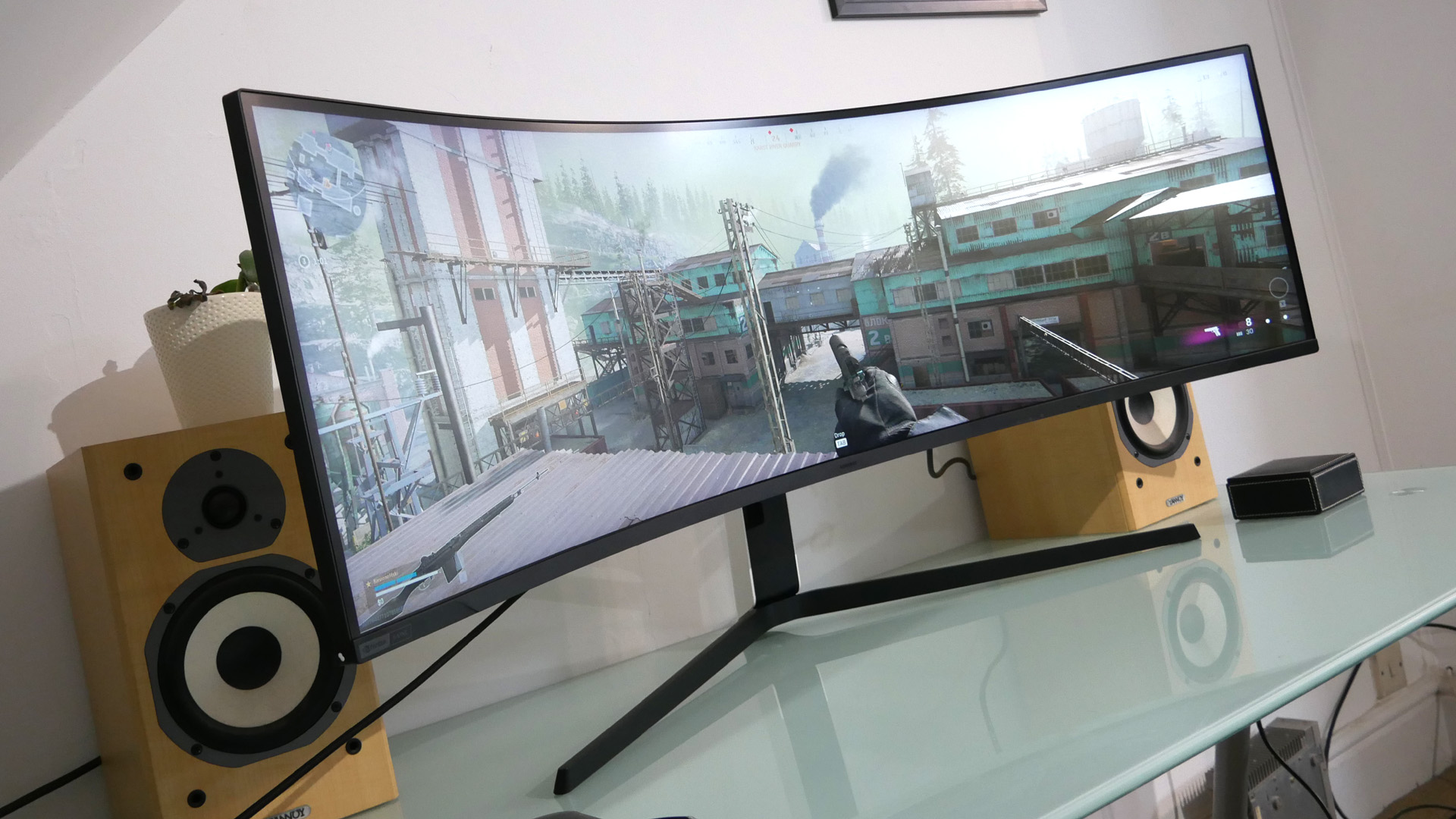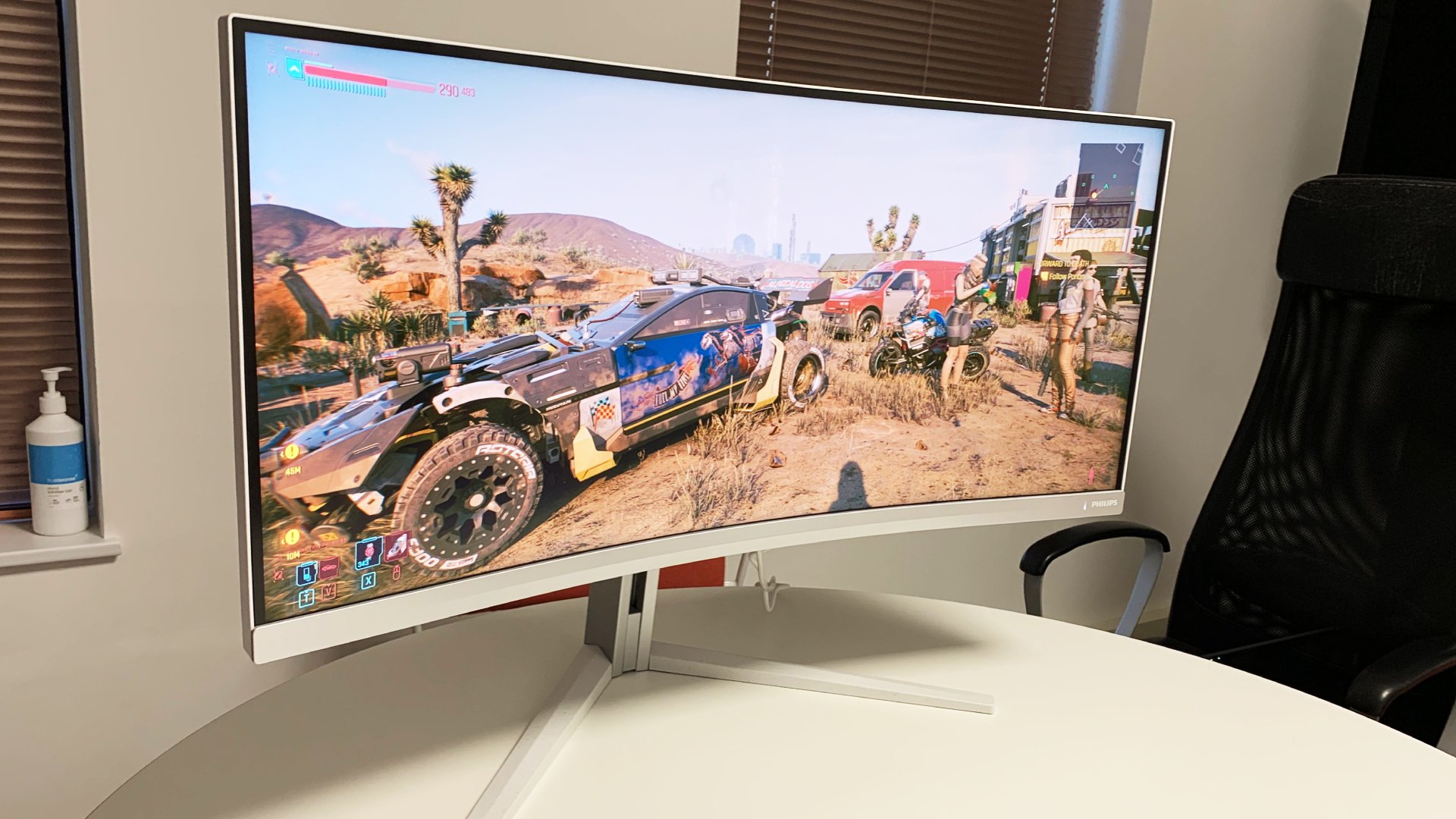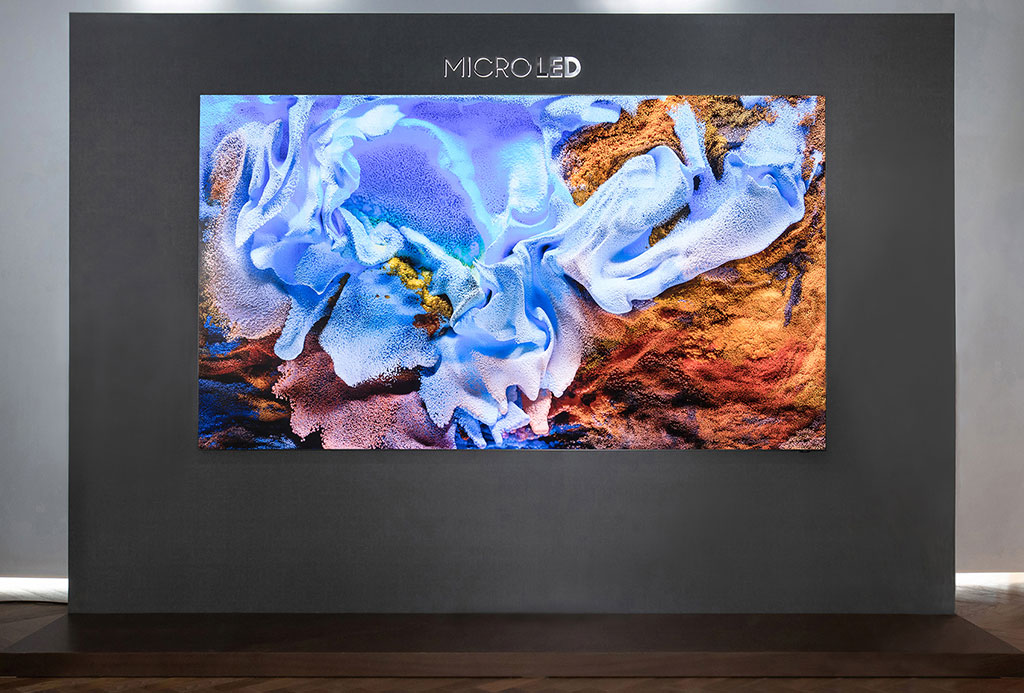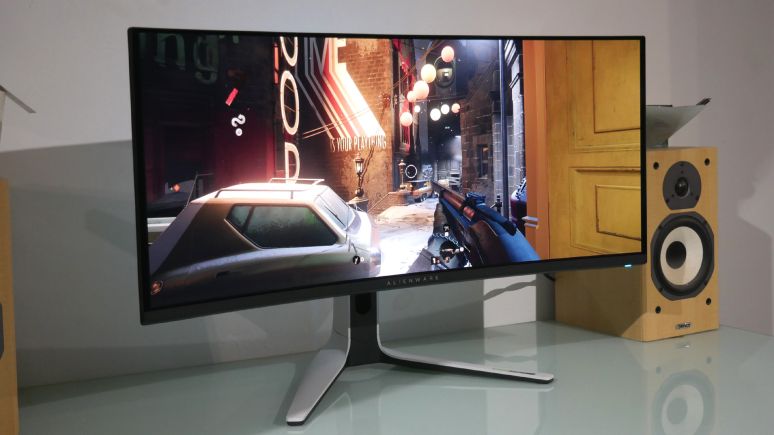[ad_1]
That is going to be disappointing, however there is not any getting spherical it. Mini LED is just not the monitor tech you’ve got been ready for. Mini LED screens are a foul concept in principle and, in apply, they’re even worse.
The truth is, what mini LED tech is finest at is delivering incredible specs. 1,400 nits of brightness? Test. Distinction ratios measured within the thousands and thousands? Yup. Extremely brilliant highs, inky black lows, epic full-screen brightness, zero danger of burn in, compatibility with ultra-high refresh charges? The works.
Simply do not point out the precise expertise. As a result of it form of sucks.
Okay, it does have one huge benefit that is actual sufficient. Mini LED is out there proper now in gaming screens you possibly can truly purchase, and in all styles and sizes. That offers it a really clear edge over microLED, which stays completely theoretical within the context of PC screens, however is the promised holy land of next-gen panel design.
It is also extra broadly accessible in much more display screen sizes than OLED tech, which has simply begun to seem in PC screens however is proscribed by advantage of being derived from TV OLED panels. So, you possibly can’t get, say, a 27-inch or 32-inch 4K OLED gaming monitor, they begin at 42 inches and above. The smaller 27-inch OLED screens are ‘solely’ 1440p and but value $1,000 and up. Yuck.
The issue with mini-LED
Anyway, this is the issue: Mini LED expertise is and can all the time be a kludge. It is a ramshackle semi-fix for a show expertise with power inherent shortcomings. And it creates a complete new set of points to switch those it fixes.
However let’s not get forward of ourselves, first let’s cowl off what mini LED truly is, the place it sits within the show tech continuum and the way it compares to different panel choices.
The very first thing to know about mini LED is that it’s merely a backlight expertise for LCD panels. It isn’t a show tech in and of itself. It is supposed to compensate for the truth that LCD panels aren’t excellent at blocking mild.
That is an issue as a result of, in a traditional LCD monitor, the backlight is on on a regular basis. You basically have the identical mild supply for a pixel that is meant to be brilliant and one which’s meant to be darkish.
In apply, LCD panels all the time let some mild by way of. So these darkish pixels in any given picture leak a little bit mild. And the brighter you need to make the intense pixels, the extra these darkish components of the image will wash out with unintended mild leakage.

The mini LED answer is to switch that single, large, dumb backlight with an energetic array of a lot smaller lighting zones. The consequence, in principle, is the flexibility to tweak the sunshine output throughout the panel to match the luminance topography of the picture being proven.
So, you crank the backlight within the zones behind brighter picture parts, and wind it again for darker areas. Presto, you’ve dramatically elevated distinction and unlock true excessive dynamic vary potentialities. In different phrases, you possibly can have a display screen that’s each brighter than earlier than and likewise delivers far superior distinction. Job jobbed.
The place the issue is available in, and the place mini LED clearly is not nearly as good as some alternate options, includes precision. Each OLED and microLED supply true per-pixel lighting management. In each applied sciences, every pixel is its personal totally addressable mild supply. There is not any backlight, simply complete management from most brightness to totally off for every pixel.
By comparability, mini-LED backlight zones are shared over quite a lot of pixels. And that variety of pixels is large. Actually large.
It isn’t sufficient zones
Take, say, a 32-inch 4K monitor. That is a preferred kind issue of late for high-end gaming screens with mini LED backlights. The native decision of a 4K LCD panel is 3,840 by 2,160 pixels.
That involves a grand complete of 8,294,400 pixels, exactly. Which is so much. Now, a mini-LED monitor with 1,152 dimming zones additionally appears like rather a lot. But when do the maths every zone, every factor of the mini-LED backlight, is lighting up totally 7,200 pixels.
In fact, many on-screen parts are a lot smaller than that. The small traces making up textual content, for example, is perhaps just some pixels throughout. The pinpoint stars in an area scene likewise. Different parts is perhaps a couple of hundred pixels however nonetheless far smaller than a given dimming zone. So, there’s your first downside. The lighting is not practically granular sufficient.
You are subsequently left with a selection. Do you mild up all the things and put up with what’s often known as blooming round brilliant objects because of the zones being greater than the issues they’re lighting up? Or do you solely crank the mini LEDs up for actually massive areas of brilliant picture information?

Keep in mind, right here, that on a 32-inch 4K panel, you are speaking a couple of backlight ‘decision’ of roughly 45 by 25 zones. Think about how large these zones individually are. Think about if that was the precise display screen decision. In a phrase: Blocky!
So, what you find yourself with in apply are various commerce offs from one display screen to the following, relying on the preferences of the producer. There is not any proper or flawed. It is all compromise.
Mini LED screens look significantly unhealthy on the Home windows desktop. As you progress a brilliant window on a darkish background, you usually see the zones popping on and off. It is simply so clunky.
Even with a static picture, you usually see issues, similar to a brightness gradient throughout textual content. The textual content itself usually is not substantial sufficient itself to set off the dimming algorithms. So the brightness of textual content, significantly brilliant textual content on a darkish background, is dictated by the picture parts close to the textual content in query. The result’s often both an actual mess or simply actually dim textual content you possibly can barely learn as a result of the algorithm hasn’t deemed it worthy of a little bit of backlight effort.
Kludgy calibration
Now, the counter argument to all of that goes like this. It is lacking the purpose. Mini LED tech is not about net searching. It is about video games and flicks. And, admittedly, the zones popping on and off are a lot much less apparent in recreation or watching films.
However the issues stay. Some mini LED screens, for example, could be over aggressive in the case of dimming the backlight. The result’s the lack of shadow element.

The fact is that you simply want a good quantity of backlight pushing by way of the LCD apertures to allow sufficient mild to make the distinction between two fairly darkish shades of gray seen subsequent to a patch of full blackness. So, you must select what you favor.
If you would like that actually low black stage, you must ramp the backlight proper down, which then makes the shades of gray meld into the darkness. Otherwise you bump it up a bit to permit the element to return by way of and the black ranges wash out.
Then there’s the issue of backlight syncing. It is a powerful sufficient job driving eight million pixels. However now you must time 1,152 backlight zones to match regardless of the pixels are doing. That may be a fiendishly troublesome job when milliseconds matter. What’s extra, mini LEDs basically have totally different response traits to LCD pixels. So, that needs to be taken under consideration.
In different phrases, the complexity of these trade-offs, pressured by the mismatch in dimming zone and pixel dimension, are piled on prime of additional complexity when it comes to syncing the entire thing seamlessly.
The web result’s that we have seen quite a few mini LED screens right here on PC Gamer and none have truly been any good. Some have had actually terrible apparent points like flickering. However all have been hideously clunky on the Home windows desktop and a combined bag in-game. There is not any want to call names. They’ve all, with out exception, been a bit crap, particularly given the lofty worth tags.
At finest, to make use of the native dimming tech you must toggle it on and off while you load a recreation. You possibly can’t simply depart it working, it is too grim on the desktop. That maybe is not the tip of the world. It actually would not be if it could possibly be sorted with a single button press, which often is not the case.
However then the picture high quality in-game with the dimming on all the time betrays the commerce offs and selections made by whoever arrange the algorithms. There isn’t any proper and flawed in that regard. Simply selections between varied compromises, none of which come near replicating true per-pixel lighting.

A scarcity of alternate options
In our expertise, if it is a good HDR-ish expertise you need from an LCD monitor, the very best outcomes come from the newest VA panels with the brightness cranked up on a monolithic backlight. The perfect VA tech provides as a lot as 4,000:1 static distinction, much better than the 1,000-1,300:1 of IPS tech (save LG’s IPS Black panels which have but to seem in gaming screens). That is sufficient for very punchy highs whereas retaining affordable black ranges.
The one partial exception to that is mini LED expertise in laptops (opens in new tab). As a result of the panels are a lot smaller, the dimming zones shrink commensurately and among the points turn into much less seen. However they’re all nonetheless there and with time solely turn into extra irritating.
In fact, none of that is to say there’s an ideal various. OLED has its personal points, most clearly very restricted full-screen brightness in addition to the danger of burn in. The subpixel construction of each OLED gaming monitor at present available on the market can be problematic. To this point, none use standard (for the PC) RGB pixels, and that is an issue for stuff like font rendering which addresses the panel on a subpixel stage.
In principle, microLED is the reply to all our flat panel wants with searing brightness, no burn in danger and OLED-matching per-pixel lighting. However microLED tech at present prices megabucks and the expertise, as but, cannot be scaled down to supply PC-relevant resolutions at sensible panel sizes. The smallest 4K microLED panel, proper now, is round 70 inches throughout. A corresponding 32-inch monitor lower out of that may be sub-1080p and have enormous pixels. Ineffective.
These points shall be solved finally. However within the meantime, do not go pondering mini LED even comes near per-pixel applied sciences in the case of distinction management and HDR efficiency. As a result of it does not.
If mini LED tech could possibly be had virtually at no cost as an additional, then it will make sense. You might use the native dimming from time to time and never begrudge the actual fact it was often switched off. However it’s pricey and sophisticated to implement and provides a whole bunch of {dollars}, at minimal, to a monitor’s price ticket. Paying $1,000-plus for one thing so clearly flawed isn’t any enjoyable and as a stop-gap function it is already destined for obsolescence.
[ad_2]
Source link


